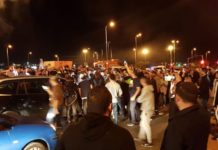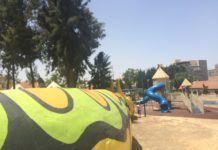Practical tips for personal documentation during emergency times
1. When siren goes off, automatically turn on your video camera on your smartphone.
2. While taking cover, do your best to capture people’s reactions around you. Focus on woman and children taking cover. Filming the Iron Dome interception is not media worthy and doesn’t express to the world the fact, that most Israeli citizens today are under Iranian missile fire from Hamas controlled Gaza.
3. Film short videos, 15- 30 seconds – they can be one after the other. If possible make screen shots from your video clip of your best footage. These snap shots can be used for news/media internet outlets.
This would be the most effective and fastest way to share your material on social media.
4. While documenting- Try and focus on the most humanistic dramatic scene happening during this time, and have your smartphone steady, without too much movement up to 10 seconds.
5. If possible, while the drama is going on – ask people around you to describe what’s going on at this moment and how they are feeling during this time. Let people express themselves and let the person talk without too many interruptions. Get their full name and if they speak a foreign language (English, Spanish, French etc.), ask for their number. (If this resident knows how to express himself, we can direct reporters to record his testimony)
6. If you happen to be alone when a siren goes off, talk to the camera and describe in your own words, the scene you are filming. Try and give as much background as possible, also from your personal experience:” I’m here in Tel-Aviv, the time is… date… we just had 5 missiles fired towards us, a huge explosion of the Iron dome above our heads, just witnessed families with children running out from the beach area to take cover… ”
Speak your mind and try and express your feelings at that very moment and perhaps share your experiences of the past few days.
7. Rocket explosion site: Film the damage, focus on it (back to tip #4) pay attention to your surroundings. After capturing the footage of the explosion and damage effects, move on to the human side of the story- focus on people at the scene. If possible, ask an eye-witness to describe what just happened, and where were they were during the attack. The best captions- people alongside the explosion site.
8. Sending material through Whatsup. With each photo & video, add two sentences describing your footage. Where and when was this taken? Videos of Interviews with residents- mention their full names.
Connecting through Whatsup
1. Add my phone number to your contacts on your phone: 054-5598977, Noam Bedein.
2. Send me on Whatsup message (if you don’t have the app, download it first), mentioning your full name for credit, your location and your title.
3. You’ll be added to a closed Whatsup group called – ‘Citizens Diplomacy’. In this group, we will be sharing our personal documentation footage, and create a data base to present the human side of the conflict.
4. Valuable footage and good captions of real-time scenes, will be sent directly to government officials, media/news outlets and Whatsup groups.
5. You will have the option of being the contact person for this advocacy project, by simply managing your own Whatsup group with your friends/family who are willing to document scenes and share their on-line footage with you. It will be your task to share their footage with the ‘Citizens Diplomacy’ Whatsup group.











